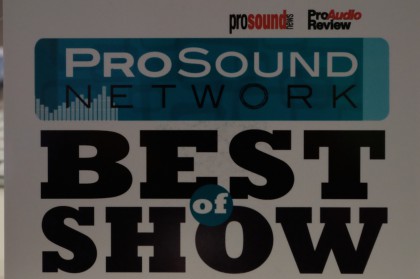Voted BEST in Show at the Audio Engineering Convention in Los Angeles last week!

With a compact footprint and outstanding acoustic performance, the 8351 Acoustically Coaxial SAM System marks a bold step forward in active monitoring featuring major advances in audio driver technology integrated into a sophisticated enclosure design
Genelec, the leader in active monitoring technology for over 35 years, offers the revolutionary new 8351 three-way Smart Active Monitor (SAM), developed in response to the need for increasing audio perfection for near-field recording and mix environments. Offering unique size and technological innovations, the 8351 breaks new ground in electro-acoustic engineering, as the mechanical, acoustical and signal-processing designs are linked closely together. The result is a system that is completely unique in the professional monitoring industry and represents a bold step forward for the active monitoring pioneer.
The 8351 borrows its size attribute from Genelec’s acclaimed 8050, the 8351 has a particularly compact footprint for a three-way monitor. The center of the 8351’s enclosure features the Minimum Diffraction Co-axial midrange/tweeter driver. This breakthrough in coaxial driver design provides extremely accurate imaging and improved sound quality, with crystal clear accuracy, both on and off-axis, vertically as well as horizontally. Aesthetically striking is the absence of any visible woofers, which are concealed beneath the Directivity Control Waveguide (DCW). The areas on the perimeter of the DCW are the acoustic openings for the proprietary Genelec-designed Acoustically Concealed Woofers (ACW™).
It’s this arrangement, the Co-axial midrange / tweeter in combination with the innovative bass drivers, together form a three-way co-axial enclosure with large continuous Directivity Control Waveguide (DCW) across the entire front. The extremely smooth frequency response and dispersion pattern lead to outstanding clarity and definition of the audio signal.
Genelec knows that smaller environments can cause significant problems with regards to the room performance, but SAM (Smart Active Monitoring) technology takes all that can be good about a monitor by itself and integrates it further into the listening environment. SAM technology creates a computer controlled, flexible network of monitors and makes them as a fully aligned system with regards to level, timing and room response equalization – all done automatically – as well being configurable by the end user. Like all active monitors in the Genelec SAM range, the 8351 is capable of automatically adapting to acoustical environments to offer an indispensable tool for sound professionals in broadcasting, post production, music studios and remote recording environments.
The 8351 is a remarkable achievement in electro-acoustic design by a group of engineers who remain committed day after day to delivering performance-based solutions for the professional audio market.
For more information, please visit Genelec.

